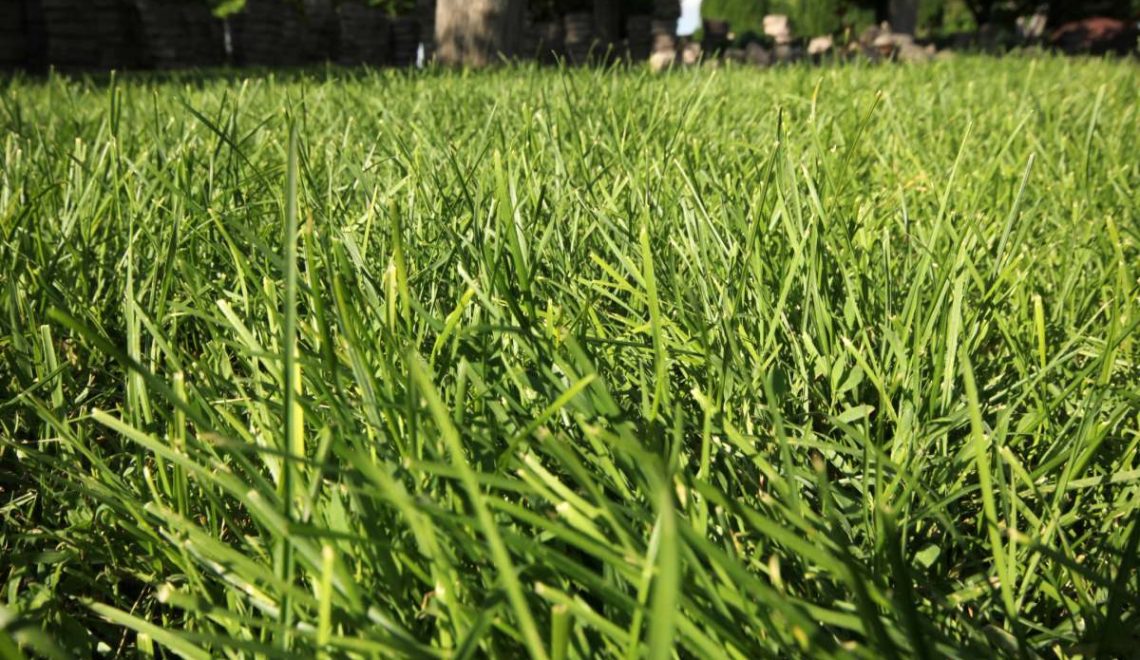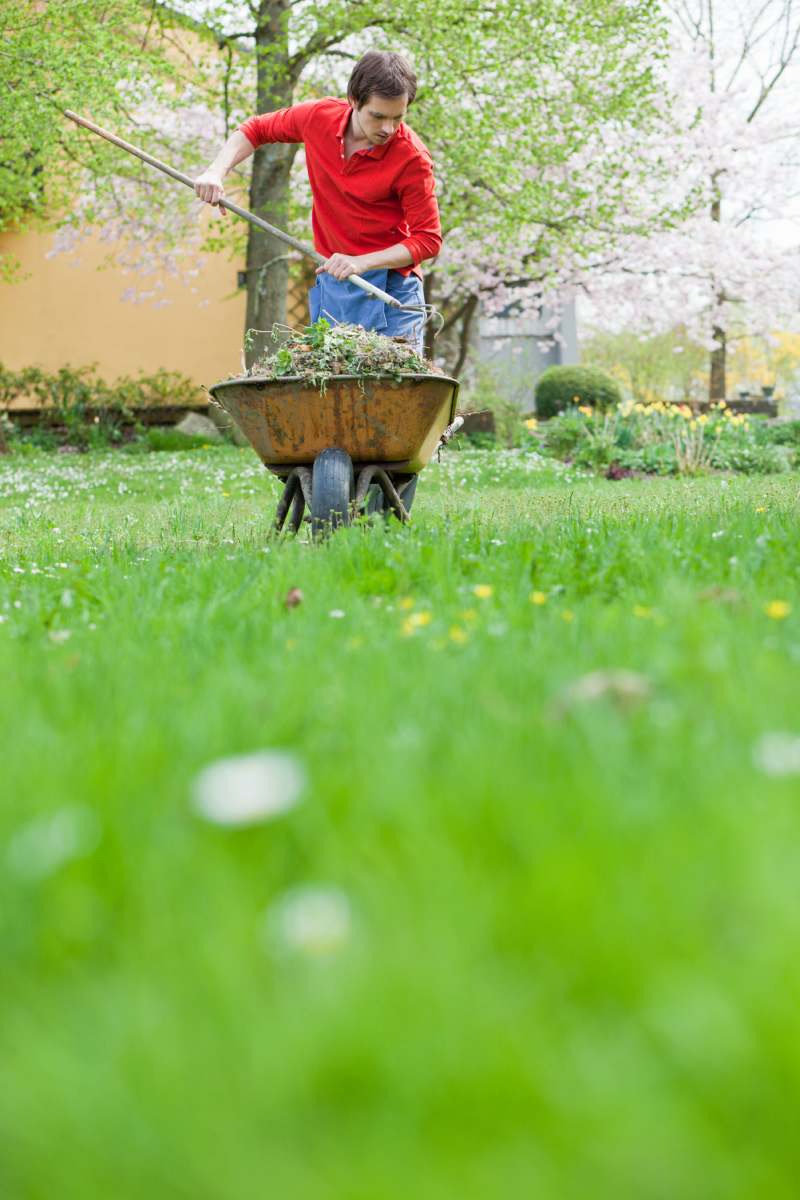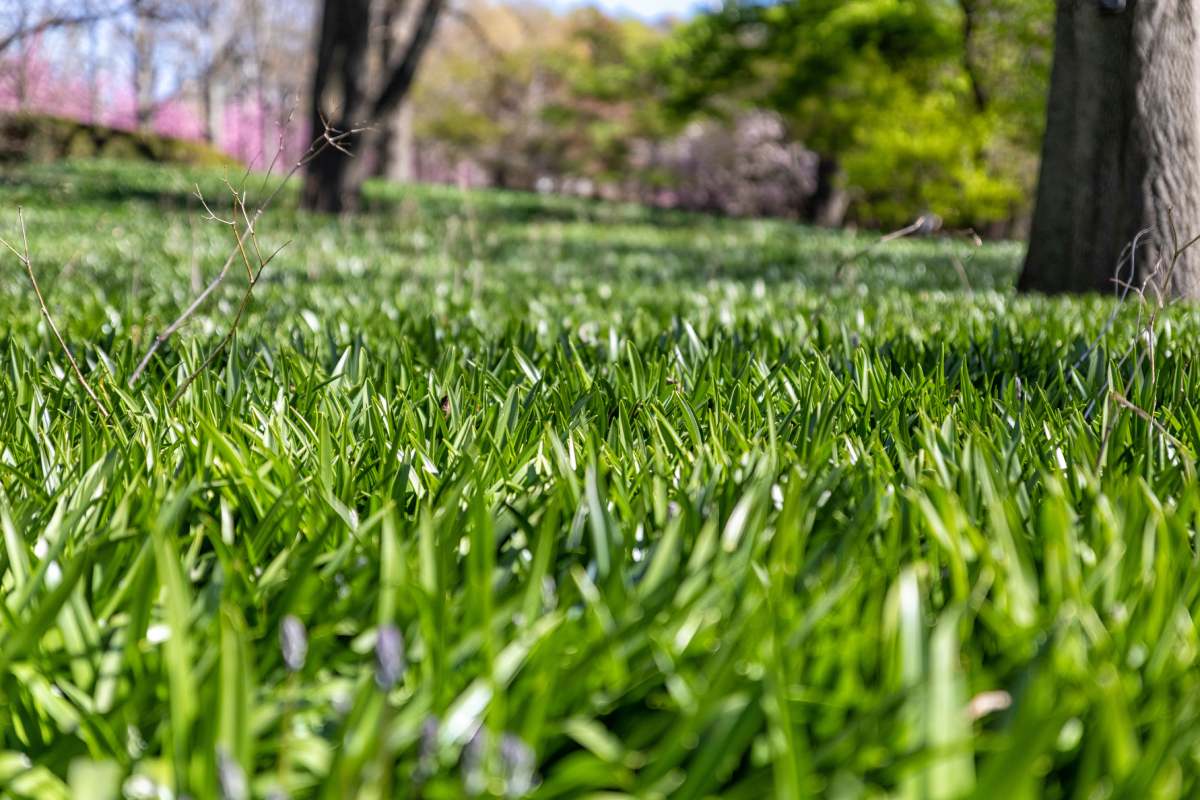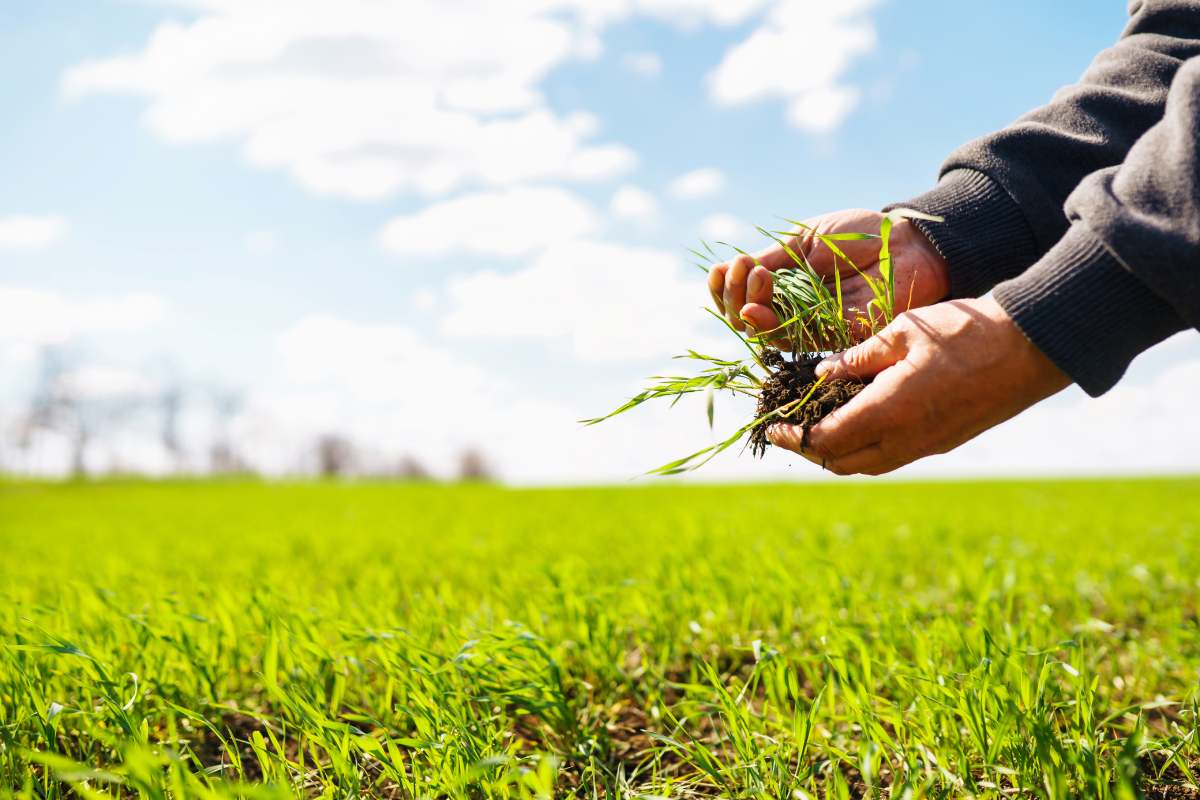
A vibrant, green lawn is every homeowner’s dream, but it often means waging war on stubborn weeds. Buffalo grass, favoured for its toughness and easy upkeep, is a common choice for lawns. Yet, even this robust variety can fall prey to weed attacks.
Weeds not only spoil your lawn’s look but also steal vital nutrients, water, and light from the grass. To keep your buffalo grass lawn thriving and weed-free, it’s crucial to know and apply effective weed-fighting tactics. This guide offers you a full range of advice on how to maintain a healthy lawn, manage watering and soil properly, and use herbicides wisely to stop weeds from gaining a foothold.
You might also read:
- What is a garden shed? What are the pros and cons of a garden shed? What is the best type of garden shed?
- How to keep your plants warm during the winter? Which plants are to be extra careful when winter comes? What plant can survive winter weather?
7 common weeds in Buffalo grass
Buffalo grass is a popular choice for lawns and pastures because of its resilience and low maintenance requirements. However, like any grass, it can be vulnerable to weeds that compete for nutrients, water, and sunlight.
Here are seven common weeds found in buffalo grass and some tips on how to manage them.
1. Dandelion (Taraxacum officinale)
Dandelions are easily recognizable by their bright yellow flowers and fluffy seed heads. They thrive in disturbed soils and spread quickly through both seeds and deep taproots. To control dandelions, hand-pulling can be effective, especially when the soil is moist. Ensure you remove the entire root to prevent regrowth. Herbicides designed for broadleaf weeds can also help but should be used with caution to avoid damaging the buffalo grass.
2. Crabgrass (Digitaria spp.)
Crabgrass is a summer annual weed that spreads rapidly and can take over weak or thin lawns. It has a distinctive coarse texture and a sprawling growth habit. Preventing crabgrass involves maintaining a thick, healthy lawn that can outcompete it. Pre-emergent herbicides applied in early spring can prevent crabgrass seeds from germinating. Once established, crabgrass is harder to control and may require selective post-emergent herbicides.
3. Clover (Trifolium spp.)
Clover is a low-growing perennial weed with small, white, or pinkish flowers. It fixes nitrogen in the soil, which can benefit other plants but also allow it to thrive in low-nitrogen conditions where buffalo grass might struggle. To control clover, improve soil fertility and lawn health. Mowing high and watering deeply but infrequently can also help buffalo grass compete. For severe infestations, broadleaf herbicides can be used.
4. Bindweed (Convolvulus arvensis)
Bindweed, also known as wild morning glory, is a persistent perennial weed with twining stems and white or pink trumpet-shaped flowers. It spreads through seeds and deep, extensive roots. Controlling bindweed requires persistence. Regular mowing can reduce seed production, and digging out roots can help, but it’s challenging due to their depth. Herbicides may be necessary for severe cases, focusing on systemic options that kill the root system.
5. Nutsedge (Cyperus spp.)
Nutsedge is a grass-like perennial weed that grows faster than buffalo grass and has a triangular stem. It prefers wet, poorly drained soils and spreads through tubers called “nutlets.” To manage nutsedge, improve lawn drainage and avoid overwatering. Hand-pulling can be effective if the entire plant, including nutlets, is removed. Specialized herbicides targeting sedges can also be used, but repeated applications may be necessary.
6. Chickweed (Stellaria media)
Chickweed is a low-growing annual weed with small white flowers and mat-forming stems. It thrives in cool, moist conditions and can quickly cover large areas. Prevent chickweed by maintaining a dense lawn and reducing soil moisture through proper irrigation practices. Hand-pulling is effective for small infestations, and broadleaf herbicides can be used for larger areas.
7. Bermudagrass (Cynodon dactylon)
While Bermudagrass is a desirable turfgrass in some regions, it can become a troublesome weed in buffalo grass lawns. It spreads aggressively through stolons and rhizomes, outcompeting buffalo grass. Managing Bermudagrass involves consistent mowing, as keeping it short can weaken its growth. Herbicides labelled for use against Bermudagrass can help, but repeated treatments and overseeding with buffalo grass may be necessary to restore balance.
Tips for General Weed Control in Buffalo Grass
- Maintain Lawn Health: A thick, healthy buffalo grass lawn can outcompete many weeds. Proper mowing, watering, and fertilizing are key.
- Regular Monitoring: Regularly inspect your lawn for weeds and address problems early before they spread.
- Proper Irrigation: Water deeply and infrequently to encourage deep buffalo grassroots and discourage weeds.
- Use Herbicides Wisely: Choose the right herbicide for the weed and follow label instructions carefully to avoid damaging your buffalo grass.
How do I take care of weeds in my buffalo grass lawn?
Taking care of weeds in your buffalo grass lawn requires a combination of good lawn care practices, manual removal, and the careful use of herbicides. Here’s a detailed guide to help you manage weeds effectively and maintain a healthy buffalo grass lawn.
1. Maintain Lawn Health
A healthy, dense buffalo grass lawn is the best defence against weeds. Proper maintenance practices create an environment where buffalo grass can thrive, outcompeting weeds.
- Mowing: Mow your buffalo grass to the recommended height, typically around 2 to 3 inches. Regular mowing prevents weeds from setting seed and spreading.
- Watering: Water deeply but infrequently to encourage deep root growth. Buffalo grass is drought-tolerant, so it doesn’t need frequent watering. Watering once every 7-10 days is usually sufficient.
- Fertilizing: Apply a balanced fertilizer according to soil test recommendations. Avoid over-fertilizing, as this can promote weed growth. Buffalo grass typically requires less nitrogen than other grasses.
2. Manual Weed Removal
Hand-pulling weeds is an effective way to control them, especially for small infestations.
- When to Pull: The best time to pull weeds is after rain or watering when the soil is moist, making it easier to remove the entire root.
- Tools: Use a weeding tool or a small hand trowel to help remove the entire root system of the weed. This is crucial for perennial weeds like dandelions and bindweed.
3. Mulching and Overseeding
- Mulching: Apply a thin layer of organic mulch around the base of your buffalo grass to suppress weed growth. Mulch helps retain soil moisture and adds organic matter to the soil.
- Overseeding: If your lawn has bare spots, overseed with buffalo grass seeds to thicken the lawn. A dense lawn can choke out weeds by reducing the available space for them to grow.
4. Proper Irrigation Practices
- Deep Watering: Watering deeply encourages the roots of buffalo grass to grow deeper, making it more drought-resistant and less susceptible to weed invasion.
- Avoid Overwatering: Overwatering can create conditions favourable for weed growth. Buffalo grass is naturally drought-tolerant and performs best with minimal irrigation.
5. Using Herbicides Wisely
Herbicides can be effective but should be used carefully to avoid damaging your buffalo grass.
- Pre-emergent Herbicides: These herbicides prevent weed seeds from germinating and are applied early in the growing season, typically in early spring. They are effective against annual weeds like crabgrass.
- Post-emergent Herbicides: These are used to kill existing weeds and are applied during the growing season. Selective herbicides target broadleaf weeds without harming buffalo grass.
- Spot Treatment: For small infestations, spot-treat weeds with herbicide to minimize chemical use and reduce the risk of damaging your lawn.
6. Improve Soil Conditions
Healthy soil promotes a strong buffalo grass lawn that can better compete with weeds.
- Soil Testing: Conduct a soil test to determine the pH and nutrient levels. Buffalo grass prefers a slightly alkaline pH (6.0-7.5).
- Aeration: Aerate your lawn to reduce soil compaction, improve drainage, and increase airflow to the roots. This encourages healthy grass growth and discourages weeds.
7. Regular Lawn Inspection
Regularly inspecting your lawn allows you to catch and address weed problems early.
- Weekly Checks: Walk your lawn weekly to look for emerging weeds. Early detection makes it easier to control weeds before they spread.
- Immediate Action: Take immediate action when you spot weeds. The sooner you address the problem, the easier it is to manage.
What’s the best way to prevent weed growth on my lawn?
Preventing weed growth in your lawn involves a combination of good lawn care practices, proper timing, and proactive measures. Here’s a comprehensive guide to help you maintain a healthy, weed-free lawn.
1. Maintain a Healthy Lawn
A dense, healthy lawn is the best defence against weeds. Healthy grass competes effectively for resources like sunlight, water, and nutrients, leaving little room for weeds to establish.
- Mowing: Mow your lawn to the recommended height for your grass type. For buffalo grass, keep it at around 2 to 3 inches. Mowing too short can stress the grass and provide opportunities for weeds to take hold.
- Watering: Water deeply but infrequently to encourage deep root growth. This not only strengthens your grass but also makes it more resilient to drought and less hospitable to weeds that prefer shallow, frequent watering.
- Fertilizing: Fertilize your lawn based on soil test results. Use a balanced fertilizer and avoid over-fertilizing, which can promote weed growth. Buffalo grass typically requires less nitrogen than other grass types.
2. Proper Irrigation Practices
- Deep Watering: Water your lawn deeply to encourage deep roots. Shallow watering promotes weed growth by keeping the soil surface moist.
- Avoid Overwatering: Excessive water can create an environment conducive to weed growth. Watering once every 7-10 days is usually sufficient for buffalo grass.
3. Soil Management
Healthy soil promotes a strong lawn that can outcompete weeds.
- Soil Testing: Conduct a soil test to determine pH and nutrient levels. Buffalo grass prefers a slightly alkaline pH (6.0-7.5). Amend the soil as necessary based on test results.
- Aeration: Aerate your lawn annually to reduce soil compaction, improve drainage, and increase airflow to the roots. This encourages healthy grass growth and discourages weeds.
4. Mulching and Overseeding
- Mulching: Apply a thin layer of organic mulch around the base of your lawn to suppress weed growth, retain soil moisture, and add organic matter to the soil.
- Overseeding: Fill in bare spots by overseeding with buffalo grass seeds. A thick lawn can choke out weeds by reducing the available space for them to grow.
5. Using Pre-emergent Herbicides
Pre-emergent herbicides prevent weed seeds from germinating. They are most effective against annual weeds like crabgrass.
- Timing: Apply pre-emergent herbicides in early spring before weed seeds begin to germinate. This creates a barrier that prevents new weeds from sprouting.
- Application: Follow the product’s instructions carefully, ensuring even coverage for effective prevention.
6. Manual Weed Removal
Regularly inspect your lawn and remove weeds as soon as they appear.
- Hand-Pulling: Pull weeds by hand when the soil is moist to ensure you remove the entire root. This is particularly effective for larger weeds like dandelions.
- Weeding Tools: Use tools like a dandelion digger or a small trowel to assist in removing deep-rooted weeds.
7. Proper Lawn Care Practices
Consistent and proper lawn care practices create an environment where your grass thrives and weeds struggle.
- Mowing High: Keep your grass at its recommended height to shade the soil and prevent weed seeds from germinating.
- Clippings: Leave grass clippings on the lawn to decompose and return nutrients to the soil, which helps maintain soil fertility and health.
- Edging: Use edging tools to maintain clean borders around your lawn and prevent weeds from encroaching from garden beds or neighbouring areas.
8. Regular Lawn Inspection
Frequent inspections allow you to catch and address weed issues early.
- Weekly Checks: Walk your lawn weekly to look for emerging weeds. Early detection makes it easier to manage weeds before they spread.
- Immediate Action: Take immediate action when you spot weeds. The sooner you address the problem, the easier it is to control.
To prevent weed growth, it’s essential to maintain a dense, healthy lawn with appropriate mowing, watering, fertilization, and soil care. Incorporating mulching, overseeding, and the use of pre-emergent herbicides, as well as conducting regular inspections and prompt interventions, can lead to a vibrant, weed-free lawn.
Conclusion
To keep your buffalo grass lawn free of weeds, it’s all about being proactive and using a variety of tactics. Prioritize your lawn’s health with the right mowing, watering, and fertilizing strategies to let the buffalo grass flourish and naturally keep weeds at bay. Stay vigilant with regular checks and pull out any weeds early on.
Boost your lawn’s defences with good soil practices, mulching, overseeding, and judicious use of pre-emergent herbicides. Stick to this game plan, and you’ll have a lush, weed-free buffalo grass lawn that’s not only a joy to look at but also a perfect spot for kicking back and relaxing.



